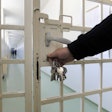At a large healthcare system in the U.S., the most frequent dental errors reported were wrong-site surgeries, and the most common reason for mistakes was a lack of policy. The study was published October 6 in the Journal of the American Dental Association.
It is believed to be the first review of dental adverse events in a large healthcare system in the U.S., the authors wrote.
“The findings should encourage discourse on how dental offices can seek to improve patient safety and safety culture,” wrote the authors, led by Dr. Erica Lo, MA, a fellow at the Veterans Affairs National Center for Patient Safety in Ann Arbor, MI.
Past research has estimated that roughly 3 million people in the U.S. may experience harm related to receiving dental treatment. Consequently, understanding the nature of mistakes and how to prevent them is vital to improving the quality of care and fostering trust in dentistry.
To get an understanding of dental adverse events, a search of the U.S. Veterans Health Administration (VHA) National Center for Patient Safety adverse event database was conducted from January 2021 to November 2024. Reports were included if events occurred in the dental clinic, operating room, or care facility and were related to a procedure or dental prosthesis. Of the 1,824 safety reports identified, only 42 included root cause analysis (RCA) reports. Reports that didn’t result in an RCA or failed to rise to the conduct that would warrant an RCA based on the severity of harm were not included.
Of the 42 reports, 17 (41%) were wrong-site surgeries, including an incorrect person receiving dental treatment. Ingestion, including a bur that was swallowed during a restoration procedure, occurred in eight (19%) patients. About 7% of the reports were for inadequately sterilized equipment, the authors wrote.
Other recorded events included using expired materials, aspiration, equipment failure, and a fire in a dental laboratory, they wrote.
Moreover, the study had limitations, including that safety reporting is voluntary in the VHA. Therefore, close safety calls or events may have occurred but weren’t reported, the authors wrote.
“The results shed light on the type of incidents that occur in an organization that seeks to foster a nonpunitive systems-based learning approach and may be more reflective of the types of harm that occur on a routine basis,” Lo and colleagues wrote.




















